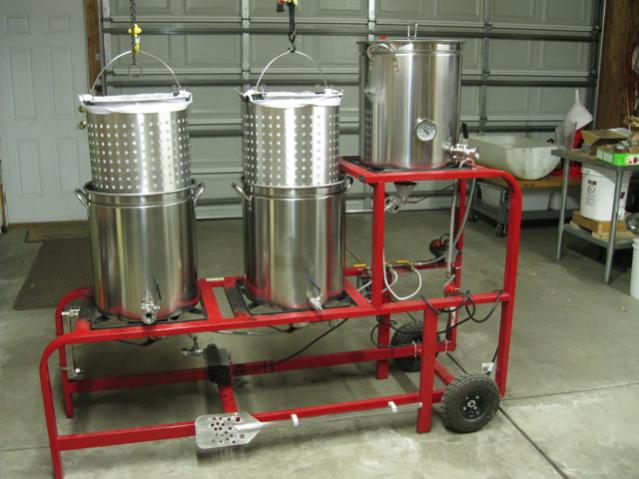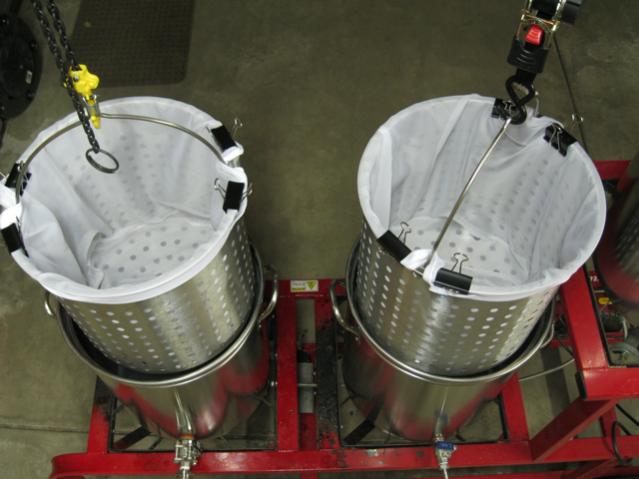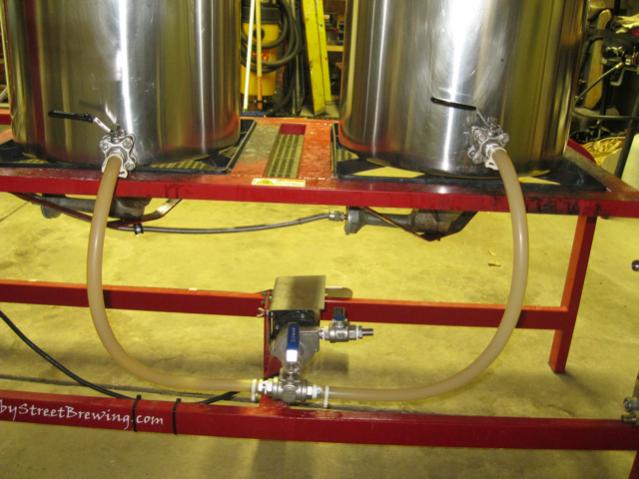I've been brewing all grain on a Ruby Street RIMS system for about two & a half years now. I became interested in BIAB when a friend asked me to help him learn how to homebrew. A story for another thread it got me thinking. Currently I brew ten gallon batches & my next big purchase will be a conical fermenter. I'd like to get one big enough to ferment 20 gal at a time & I don't want to purchase bigger pots. I've done back to back brew sessions a few times & it makes for a really long brew day! The boil pot sits idle during the entire time it takes to heat the mash water & mash on a normal brew day; so I'm going to start a ten gallon BIAB first in the boil kettle. I'll heat up about 5 gal of sparge water in the hot liquor kettle to use to sparge with after I hoist the basket & bag out of the pot before boil if needed. (the basket rests on a lip in the pot suspending it 1/4" above the pickup tube about 2" off the bottom of the pot) I'll fill the 15 gal pot as full as possible with mash temp water after grains are added, recirculate to add heat as needed & use a refractometer to adjust final pre boil wort as needed. After I start to boil the BIAB batch I'll start the second ten gallon batch in the mash kettle & proceed as normal, chilling the first batch in time to transfer the second batch into the same boil kettle. I suspended a 4' long piece of thick walled pipe from the garage rafters & use a piece of cable with loops on the ends attached to a 1/4 ton ratchet style chain hoist so it can slide out of the way after it clears the pot. The bag is one made by Jeff with four handles so two of us can carry it out to the compost pile when it is fully drained. I spent today practicing on a 5 gal BIAB batch getting ready for Tuesday when a few of my brewing friends are going to join me for the 20 gal brew day experiment. Here's my setup... Issues, suggestions, input? Cheers... 
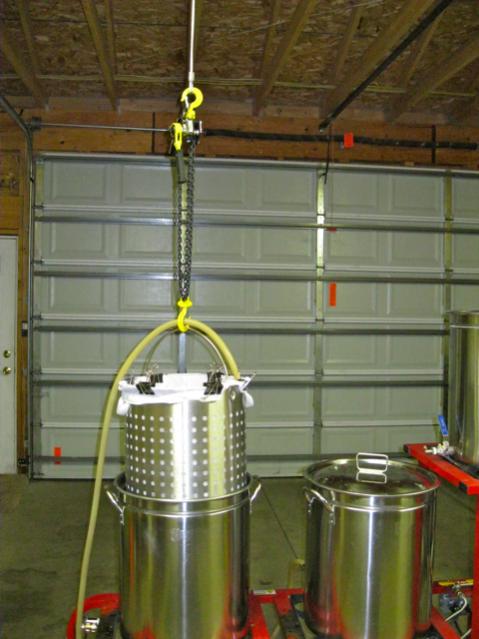
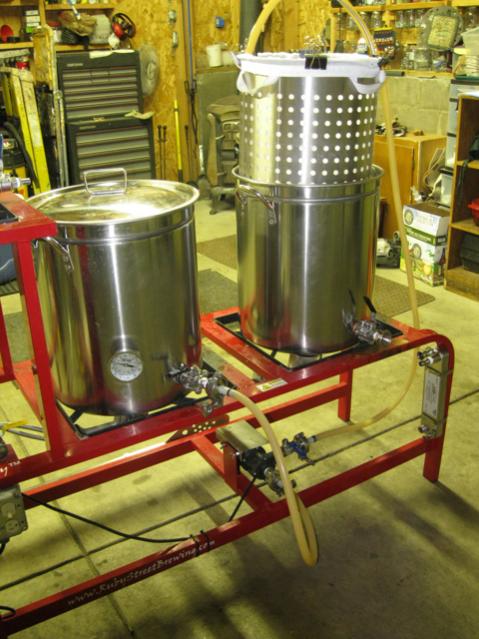





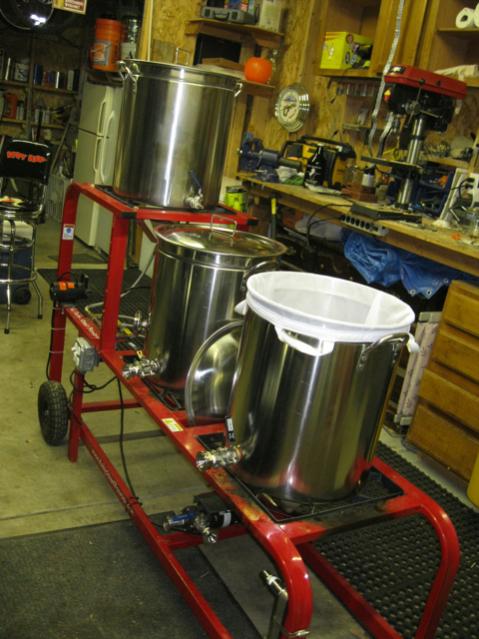



























![Craft A Brew - Safale BE-256 Yeast - Fermentis - Belgian Ale Dry Yeast - For Belgian & Strong Ales - Ingredients for Home Brewing - Beer Making Supplies - [3 Pack]](https://m.media-amazon.com/images/I/51bcKEwQmWL._SL500_.jpg)




























